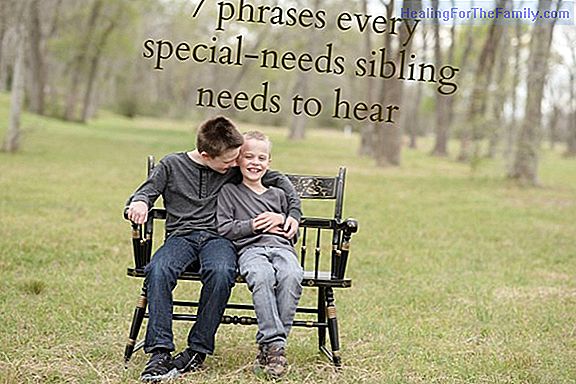How to detect problems of reading and writing in children
The process of acquiring reading and writing is one of the most relevant facts in childhood. For it to take place correctly, it is important that there is an appropriate teaching-learning process. However, despite this, there are children who have problems in these areas. But, how do you know if you
The process of acquiring reading and writing is one of the most relevant facts in childhood. For it to take place correctly, it is important that there is an appropriate teaching-learning process. However, despite this, there are children who have problems in these areas. But, how do you know if your child has a reading and writing disorder?
Why can reading and writing problems appear?

To be able to determine that a child presents alterations in reading and writing, it is important to take into account the following factors:
- Absence of alterations in vision or hearing.
- Absence of physical problems that may interfere with reading.
- Absence of emotional or neurological disorders.
- C.I. normal that allows you to develop these capabilities.
There are different causes for a child to have alterations in reading and writing, such as an inappropriate teaching method or environmental factors that are not very favorable, among others.
All this may be associated with other important aspects such as: difficulty in copying, alterations in laterality, perception, psychomotricity, attention, calculation, memory, follow-up of complex orders ...
Signs that warn of a upset of reading and writing
To identify these difficulties, we can be alert to a series of warning signs, such as the following:
In the area of writing:
- Alteration of the order of the letters in whole or in part.
- Problems in the orientation of the strokes of certain letters.
- Confusion of similar letters, such as / p / - / b / p / d / - / b /.
- Clumsiness and lack of manual coordination.
- Inadequate posture of both the child and the paper at the time of writing.
- Excessive tension or lack thereof at the time of writing.
- Multiple errors at the time of writing (omissions, substitutions, investments or additions).
In the area of reading:
- Deterioration in reading.
- Performance in this aspect significantly lower than expected in relation to their personal and school characteristics.
- They have difficulty distinguishing some letters or reading them in the proper order.
- They miss spelling mistakes.
- Slow reading, with syllables, loss of line ...
- They have difficulty reading words and phrases.
- Lack of reading comprehension.
Formal tests to evaluate a reading and writing disorder
To confirm or rule out the diagnosis of these alterations, it is important to go to a specialist who can apply some formal tests, such as:
- PROLEC-R: Evaluate the reading processes. It provides information about the reading ability of the child and about the strategies he uses in reading a text. In addition, it guides us on the mechanisms that are not working and that interfere in good reading.
- BADICABLE: This is a Basic Competency Diagnosis Battery for Reading Learning. It is used to measure the child's ability to learn written language.
- ECL: Assessment of Reading Comprehension. It serves to assess the level of reading comprehension of children.
These are just some of the tests that can be used to assess reading and writing in children. However, all of them must be applied and interpreted by a professional.












